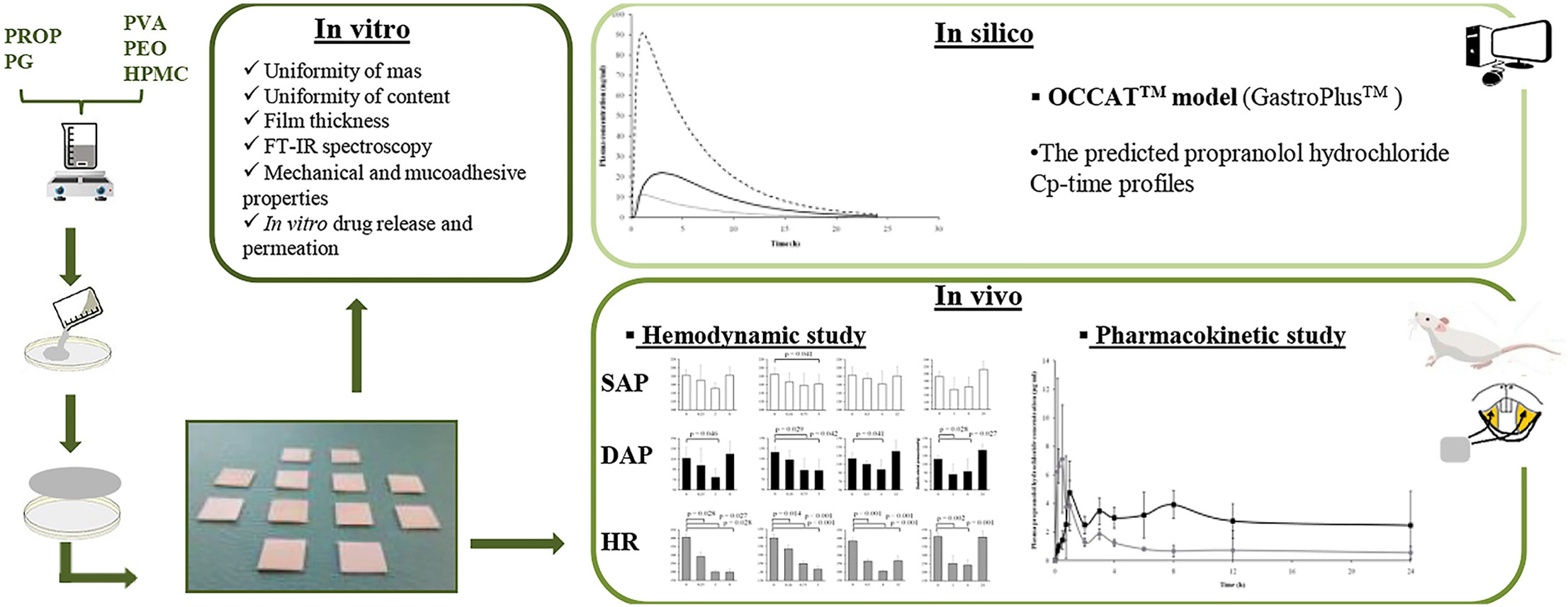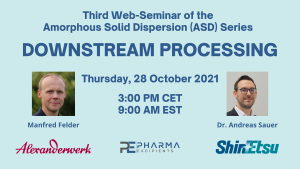Integrated in vitro – In vivo – In silico studies in the pharmaceutical development of propranolol hydrochloride mucoadhesive buccal films

In order to exploit the advantage of drug delivery through the buccal mucosa, mucoadhesive buccal films with propranolol hydrochloride based on polyethylene oxide, hydroxypropyl methylcellulose, and polyvinyl alcohol have been developed. The aim of this study was the development, pharmaceutical-technological (uniformity of mass and drug content, film thickness, potential interactions between polymers and propranolol hydrochloride, in vitro drug permeation and drug release, mechanical and mucoadhesive properties), and biopharmaceutical characterization of prepared mucoadhesive buccal films through conducting in vivo study in spontaneously hypertensive rats and in silico modeling of intraoral and gastrointestinal drug absorption.
For in vivo study formulation F2 (hydroxypropylmethyl cellulose 0.5%, polyethylene oxide 3.5%, polyvinyl alcohol 1.5%, propylene glycol 3%, and propranolol hydrochloride 2%) was selected, which showed the highest values of tensile strength and percentage of elongation, as well as the highest value of the force of adhesion. Results of pharmacokinetic in rats and in silico modeling confirmed the superiority of the mucoadhesive buccal films over immediate-release tablets (in rats: AUC0→24h 66.13 ± 18.03 vs. 24.61 ± 5.52 μg⋅h/mL, AUC0→∞ 111.82 ± 39.04 vs. 47.85 ± 11.67 μg⋅h/mL; in silico: AUC0→24h 200.17 vs.74.58 ng⋅h/mL, AUC0→∞ 204.04 vs. 75.64 ng⋅h/mL).
Hemodynamic measurements have shown that mucoadhesive buccal films, compared to immediate-release tablets, provide a more pronounced decrease primarily in heart rate (28-51%), but also in diastolic pressure (up to 33%), as well as a longer heart rate reduction that was maintained for up to 12th h. Therefore, mucoadhesive buccal films increased the degree of absorbed drug and thus contributed to better therapeutic outcomes compared to immediate-release tablets for peroral administration.
Read more here
Materials
Hydrophilic polymers hydroxypropyl methylcellulose – HPMC (Metolose® 60SH-4000, Shin-Etsu Chemical Co., Ltd., Japan), polyethylene oxide polymer – PEO (Mw 600 000 Da, Polyox® WSR 205, Dow Chemical Company, USA) and polyvinyl alcohol – PVA (Mw 130 000 Da, Mowiol® 18-88, Sigma-Aldrich Chemistry, Germany) were used as film-forming polymers for mucoadhesive buccal films; propylene glycol (Propylene glycol®, Fagron Hellas, Greece) as a plasticizer.
Ivana Kurćubić, Jelena Djuriš, Sandra Cvijić, Milkica Crevar, Svetlana Ibrić, Zoran Miloradović, Nevena Mihailović-Stanojević, Danijela Karanović, Milan Ivanov, Đurđica Jovović, Una-Jovana Vajić, Integrated in vitro – In vivo – In silico studies in the pharmaceutical development of propranolol hydrochloride mucoadhesive buccal films, Journal of Drug Delivery Science and Technology, 2023, 104715, ISSN 1773-2247, https://doi.org/10.1016/j.jddst.2023.104715.
Watch also our webinar by Shin Etsu “Downstream Processing with Alexanderwerk & Shin-Etsu” here:


